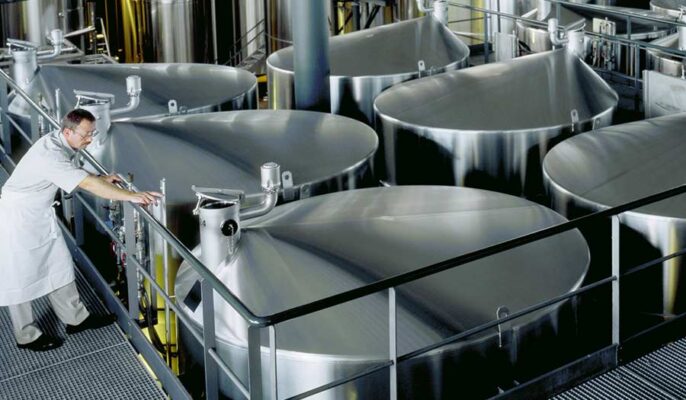Beer fermentation is a crucial stage in the brewing process, where sugars in the wort are converted into alcohol and carbon dioxide by yeast. However, brewers occasionally encounter the frustrating issue of fermentation stagnation, where the fermentation process slows down or comes to a halt. This article provides a comprehensive guide to understanding the causes of fermentation stagnation and offers preventative measures, troubleshooting techniques, and advanced solutions to address the problem effectively.
Understanding Beer Fermentation Stagnation
To tackle fermentation stagnation, it is important to first grasp what it entails. Fermentation stagnation refers to the unexpected pause or significant slowdown of the fermentation process, leading to a lack of visible signs, such as airlock activity or gravity changes. Several factors can contribute to fermentation stagnation, including poor sanitation, temperature fluctuations, yeast quality issues, insufficient oxygenation, and inadequate nutrient availability.

Preventative Measures
Preventing fermentation stagnation is key to maintaining a smooth brewing process. This section discusses essential preventative measures brewers can take:
- Proper Sanitation and Cleaning: Maintaining a clean brewing environment and properly sanitizing all equipment minimize the risk of contamination, which can hinder fermentation.
- Maintaining Optimal Temperature: Controlling the fermentation temperature within the yeast’s recommended range ensures optimal yeast activity and prevents temperature-related issues that can lead to stagnation.
- Using High-Quality Yeast: Using fresh, high-quality yeast, selecting appropriate yeast strains for the beer style, and considering yeast starters or liquid yeast cultures help ensure healthy fermentation.
- Sufficient Oxygenation: Properly oxygenating the wort before pitching the yeast promotes yeast growth and fermentation vigor.
- Troubleshooting Techniques:
- When faced with fermentation stagnation, it is crucial to troubleshoot the issue promptly. This section explores several techniques to address the problem:
- Identifying Stagnation Signs: Monitoring airlock activity, gravity readings, and sensory characteristics can help identify signs of fermentation stagnation.
- Adjusting Temperature and Environment: Checking and adjusting fermentation temperature, avoiding extreme fluctuations, and providing a stable environment are essential for reactivating fermentation.
- Re-Pitching Yeast: If necessary, re-pitching fresh yeast into the fermenter can revive the fermentation process.
- Promoting Aeration: Gentle agitation of the fermenter or using aeration stones can introduce oxygen and stimulate yeast activity.
- Nutrient Additions: Supplementing the wort with yeast nutrients ensures that the yeast has adequate nourishment for fermentation.
- Advanced Solutions:
- In persistent cases of fermentation stagnation, advanced solutions can be explored:
- Yeast Propagation and Vitality: Mastering yeast propagation techniques and ensuring robust yeast populations can enhance fermentation performance.
- pH Adjustment: Monitoring and adjusting the pH of the wort within the optimal range for yeast activity.
- Adjusting Wort Composition: Modifying the wort recipe to create a more favorable environment for yeast, such as adjusting malt types, sugar content, hop additions, and mineral composition.
- Using Fermentation Aids: Exploring the use of fermentation aids, such as enzymes or yeast energizers, to optimize fermentation conditions.
Conclusion
Beer fermentation stagnation can be a frustrating challenge for brewers, but with proper knowledge and application of preventative measures, troubleshooting techniques, and advanced solutions, it is possible to overcome this problem. By maintaining cleanliness, controlling temperature, using high-quality yeast, ensuring sufficient oxygenation, and addressing nutrient needs, brewers can minimize the risk of fermentation stagnation and achieve consistent and successful fermentations.




